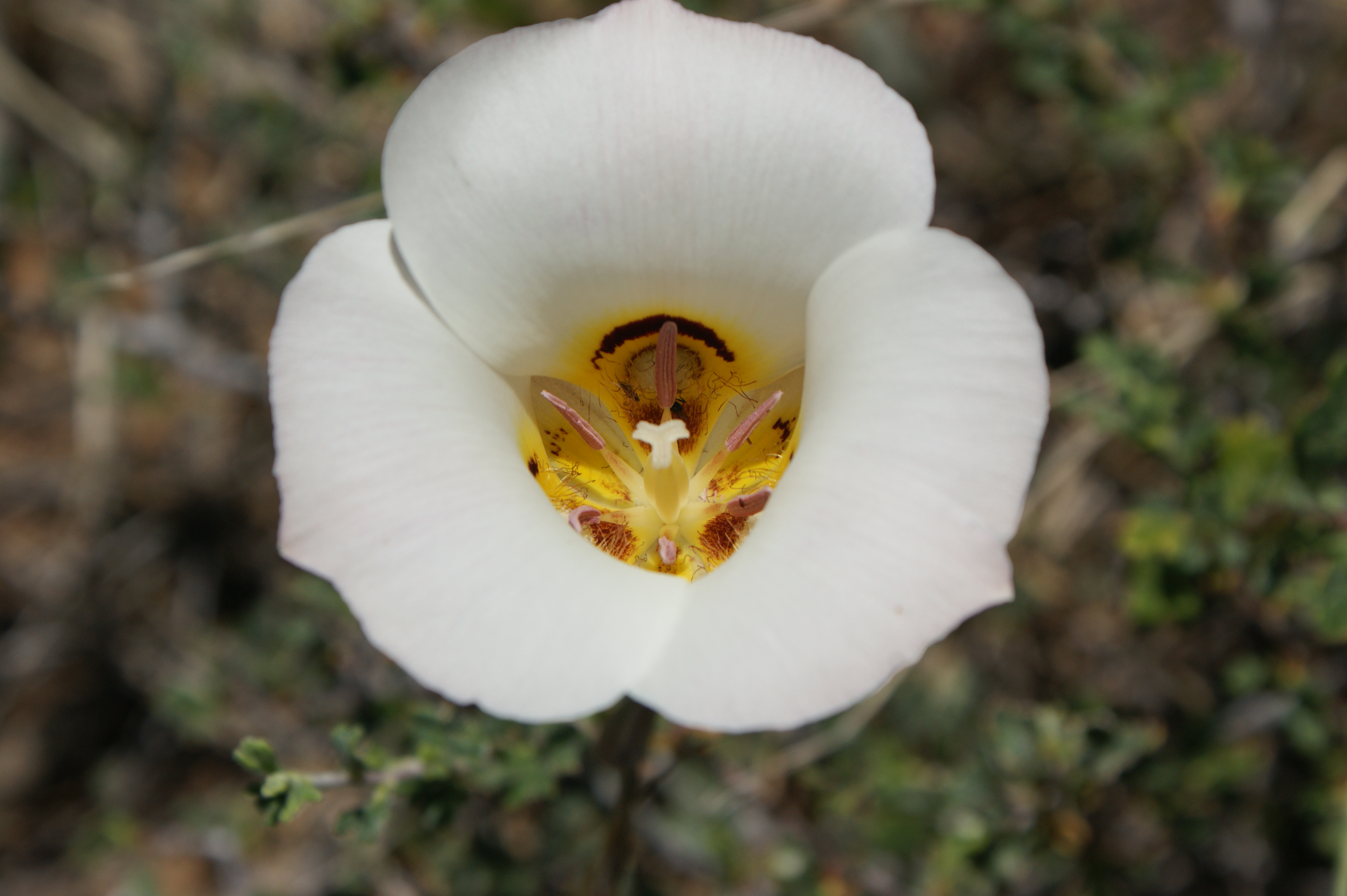Ethnobotany. A food and a medicine for many Amerindian Peoples: the bulbs were eaten raw or roasted. Calochortus nuttallii was a food for the following First Peoples: Hopi, Gosiute, Navajo, Havasupai, Ute et Païute. These informations were mentioned in “Willards Z. Park’s Ethnographic Notes on the Northern Paiute of Western Nevada 1933-1940”; “Indian Uses of Native Plants”; “Some Plant Names of the Ute Indians, American Anthropologist”; “Some Data on Plains and Great Basin Indian Uses of Certain Native Plants, Tebiwa”; “Ethnobotany of the Navajo”; “Hopi History And Ethnobotany”; “Havasupai Habitat: A. F. Whiting’s Ethnography of a Traditional Indian Culture”; “The Ethno-Botany of the Gosiute Indians of Utah, Memoirs of the American Anthropological Association”.
Kate C. Snow, President of the Daughters of Utah Pioneers, in a letter dated April 17, 1930, says that “between 1840 and 1851” food became very scarce in Utah due to a crop-devouring plague of crickets, and that “the families were put on rations, and during this time they learned to dig for and to eat the soft, bulbous root of the sego lily. The memory of this use, quite as much as the natural beauty of the flower, caused it to be selected in after years by the Legislature as the floral emblem of the State. By an act of the Utah State Legislature, approved on March 18, 1911, the sego lily was declared to be the State floral emblem. The sego lily was made the official state flower after a census was taken of the state’s school children as to their preference for a state flower.
Description by P. L. Fiedler & R. K. Zebell in Flora of North America (vol. 26). Plants usually bulbose; bulb coat, when present, membranous. Stems usually not branching or twisted, straight, 1.5-4.5 dm. Leaves: blade linear, becoming involute; basal withering. Inflorescences subumbellate, 1-4-flowered; bracts congested, unequal. Flowers erect; perianth open, campanulate; sepals marked similar to petals, usually shorter, lanceolate, glabrous, apex acuminate; petals white, tinged with lilac or infrequently magenta, yellow at base, with reddish brown or purple band or blotch distal to gland, broadly obovate, cuneate, sparsely invested near gland with slender hairs, apex usually short-acuminate; glands round, depressed, surrounded by conspicuously fringed membrane, densely covered with short, unbranched or distally branching hairs; filaments ca. equaling anthers; anthers yellowish or pinkish, oblong, apex obtuse. Capsules erect, linear-lanceoloid, 3-angled, apex acuminate. Seeds flat. 2n = 16. Flowering late spring–late summer. Dry soils; 700–3300 m; Ariz., Colo., Idaho, Mont., Nebr., Nev., N.Mex., N.Dak., S.Dak., Utah, Wyo.
Reference Books. The gem of a book for all Calochortus aficionados is : “Calochortus Mariposa Lilies and their Relatives”. By Mary E. Gerritsen and Ron Parsons. 2007. Timber Press.

